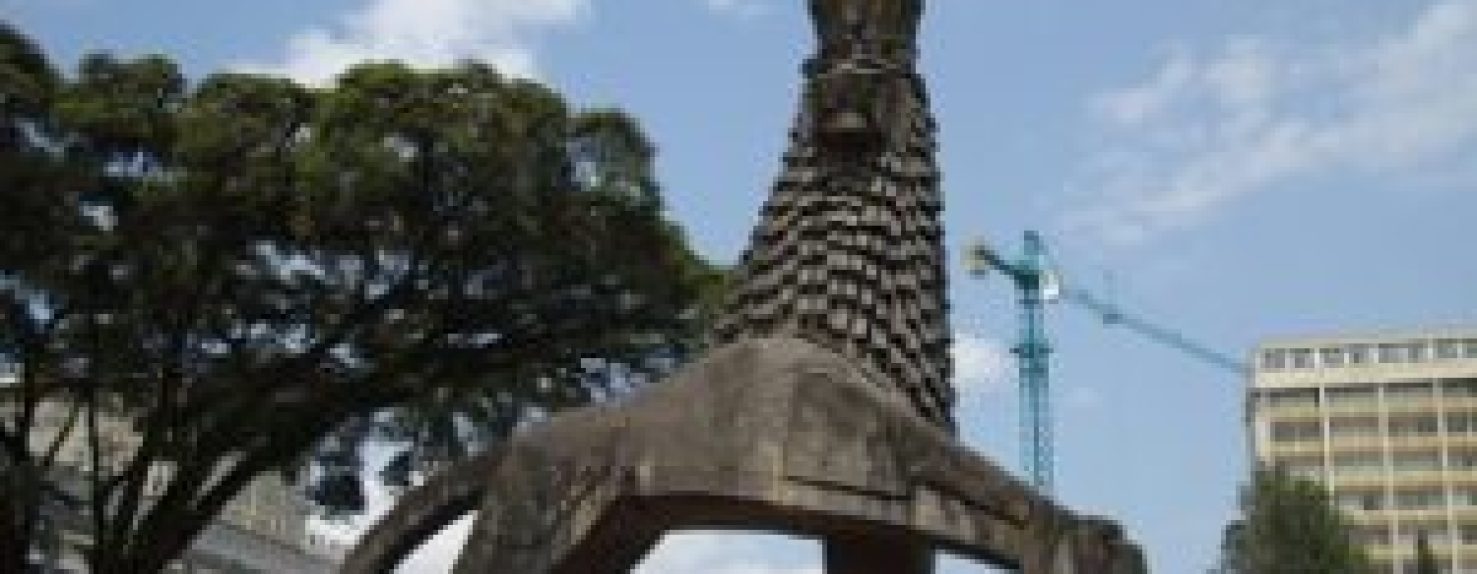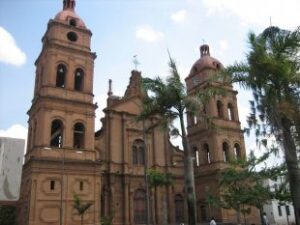- Location4.25
- Amenities4.25
- Services4.25
- Price4.25
- Rooms4.25
Presentation
Stages: ADDIS ABABA – BAHAR DAR – GONDAR – AXUM – MEQELE – LALIBELA – ADDIS ABABA
Description: Take the historic route in Ethiopia for a duration of 15 days / 14 nights from €1,675.
Day 1: PARIS / ADDIS ABABAFlight from Paris to Addis Ababa on Ethiopian Airlines. Night on board.
Day 2: ADDIS ABABA / BAHAR DAR
Arrival in the morning in Addis Ababa, transfer, installation and rest at the hotel.
Crossing the historic districts of the capital, climb Mount Entoto, from where you overlook the entire city at an altitude of 3,200 m. It is from there, it is said, that Emperor Menelik decided to create Addis Ababa “the New Flower” in Amharic.
Visit the Archaeological Museum, a sumptuous panorama of the history of Ethiopia, from the first works of Aksumite art to the reign of Menelik. Here is also the skeleton of the famous Lucy. Then, transfer to the airport and flight to Bahar Dar in the afternoon. Installation at the hotel.
Dinner and overnight at the Abay Minch 4* hotel.
Day 3: BAHAR DAREPrivate boat excursion on Lake Tana (1,860 m), Blue Nile reservoir. With an area of 3,600 km2, it has around forty islets where a dozen churches and monasteries are hidden. Visit the lush Zeghé peninsula, where coffee is grown in the shade of trees and where there are two churches from the Gondorian era; Uhra Kidane Mehret, round church which presents a very beautiful painted decoration from the 18th century, as well as a treasure of royal crowns and the church of Betra Maryam.
Return to town and visit the market. Close to Bahar Dar, road (30 km) for the impressive Abbey Falls or Blue Nile called “TisIssat”, “the smoking water”, walk (45 minutes) and return by boat.
Return to Bahar Dar.
Dinner and night at the Abay Minch 4* hotel.
Day 4: BAHAR DAR / GORGORA / GONDAR
Drive to the north shore of the lake and have lunch at the restaurant in Gondar. Detour to the village of Gorgora where the beautiful Debra Sina Church on the north shore of Lake Tana preserves the oldest example of Gondorian paintings.
Then, drive to Gondar. Gondar (2,200 m) was founded by the great king Fasiladas (1632/1667) who made it the first imperial capital of Ethiopia.
Installation at the hotel.
Dinner and night at the Goha 3* hotel.
Day 5: GONDAR
Visit the imperial enclosure where the royal castles (fasil Gebbi) are grouped together, which raise their strange European-looking silhouettes in the middle of the city. A dozen buildings, castles, library, menagerie, reception room, were erected between the 17th and 18th centuries.
Visits to the Fasiladas baths, a vast pool, surrounded by sycamore trees and dominated by an elegant pavilion, a place of relaxation for the kings of Gondar.
Then, visit the castle and the church of Qusqam, built by Queen Mentuwab which stands away from the town.
Finally, visit the church of Debra Berhan Sellassié from the 18th century. where there is a very complete pictorial cycle of Ethiopian iconography and an extraordinary ceiling populated with cherubs.
Dinner and night at the Goha 3* hotel.
Day 6: GONDAR / SIMIEN PARK / KOSSOYE
Good road and track, through one of the most spectacular regions of Ethiopia, towards the Simien mountain range “the roof of Ethiopia”. Easy walk in the park to discover the breathtaking landscapes of Simien and the astonishing gelada monkeys. Lunch in the park at Simien Lodge.
Then, return to Gondar and to the Kosoye eco-lodge, (30 km from Gondar). Spectacular view of the Simien, short walk.
Dinner and overnight at the Kosoye Lodge 3* hotel.
Day 7: KOSSOYE / AXOUM
Day drive to Aksum. The track takes the first bends of “Lima limo” at an altitude of 3000 m for a dizzying descent. The silhouette of the Simien massif remains visible for a long time. Then, we cross the Tekeze River, the main tributary of the Blue Nile. Picnic en route or lunch at the restaurant in Shire before reaching Aksum in the afternoon.
Axum, first mentioned in the 1st century AD, drew its power from controlling the trade in incense, ivory and gold from the Red Sea, and was, during the first centuries of the Christian era, the center of a brilliant civilization, traces of which can be found on both shores of the Red Sea.
Axum, first mentioned in the 1st century AD, drew its power from controlling the trade in incense, ivory and gold from the Red Sea, and was, during the first centuries of the Christian era, the center of a brilliant civilization, traces of which can be found on both shores of the Red Sea.
Dinner and night at the Yared Zema 3* or Sabean 3* hotel
Day 8: AXOUM
Day dedicated to Aksum. Visit the famous park with steles, sculpted monoliths, the most imposing reaching 33 m high. Another of these stelae, 22 meters high, taken to Rome at the time of the Italian occupation was returned and erected again in its original location. Visit the small town museum.
Then, stop to discover the stele of King Ezana which attests to his conversion to Christianity from the 4th century. Visit to the tombs of kings Kaleb and Guébré Masqal.
Lunch at the restaurant.
Then, crossing the old village of Aksum to visit the palace of Dongour, a princely residence from the 6th or 7th century AD which illustrates the last period of glory of Aksumite civilization.
In front of the Church of Saint Mary of Sion, lie shattered Aksumite thrones. Next to the church built by Fasilidas, a chapel would preserve the “Ark of the Covenant” brought from Jerusalem by Menelik, son of King Solomon and Makeda, the Queen of Sheba. It is here that most of the negus of Ethiopia were sacred. The most precious symbol of the Ethiopian Church, invisible to all except its sole guardian. A small museum keeps some treasures.
Dinner and night at the Yared Zema 3* or Sabean 3* hotel
Day 9: AXOUM / YEHA / HAWSIEN
Road through the Tigray highlands to Yeha, a Sabaean site which has preserved a magnificent 7th century temple. BCE converted into a church dedicated to Abba Afsé, one of the nine mythical founders of Ethiopian Christianity. Lunch at Agoro Lodge in Adigrat. Then, drive to the Geralta mountain range where the greatest number of these strange monuments that are the rock churches of Tigray are concentrated. Superb view. Stopover in Hawsien.
Dinner and night at Gheralta Lodge 3*
Day 10: HAWSIEN / MEQELE
Continuation of the discovery of the churches of Tigray and stop at the village of Degoum, where there is a very ancient rock formation, made up of three monuments. Then, visit the church of Abréha and Atsbéa, undoubtedly the most imposing monument in the region. The monastery church was partly dug into the cliff and partly excavated. In Wukro where we join the main road visit the rock church of Tcherqos. Finally, excursion via a difficult track to Mikael Imba, a monolithic church in a very spectacular site. Stopover in Meqele.
Dinner and night at Axum 4* hotel.
Day 11: MEQELE / LALIBELA
Day of road and track in very beautiful mountainous landscapes hollowed out by canyons (plateaus from 2700 to 3000 m) and the villages of the Amhara country. Arrival in Lalibela and check-in at the hotel.
The former capital of King Lalibela is a major UNESCO World Heritage site and a holy city for Ethiopia’s Orthodox Christians.
King Lalibela, at the beginning of the 13th century, ordered the construction of churches, carved from the mass of tuff. These churches, some of which are entirely monolithic, were built from the roof down, unlike classical constructions. The builders of these exceptional buildings, all different from each other, introduced architectural elements from Eastern churches and perpetrated those of Aksumite architecture.
The spiritual capital of King Lalibela who became a saint shortly after his death (1225) was transformed into “New Jerusalem”, and a popular place of pilgrimage to this day.
Dinner and night at the Tukul Village 4* or Maribella 4* or top Twelve 3* hotel
Day 12: LALIBELA
Visit the churches of Lalibela divided into two groups separated by a deep ditch symbolizing the Jordan. The first, the royal district, accessible by a maze of corridors cut into the rock, has 6 churches: Medhane Alem, or Church of the Savior surrounded by a portico is the most imposing, Beta Maryam where paintings and bas-reliefs remain, Beta Masqal or the Church of the Cross, which was undoubtedly a martyrium before being a church, the funerary churches of Beta Danagel, Beta Golgota, Beta Debra Sina and a chapel dedicated to the Trinity.
Dinner and night at the Tukul Village 4* or Maribella 4* or top Twelve 3* hotel
Day 13: LALIBELA
Morning excursion (30 km) to the extraordinary Yemrehana Christos monastery, built of wood and stone inside a cave, is one of the masterpieces of religious art of the 12th century. Built with materials brought from Jerusalem, Egypt and Syria, it is hidden at the bottom of a cave where nearly 6,000 pilgrims rest, it is still decorated with paintings.
Return to Lalibela
In the afternoon visit of the second group, the ecclesiastical district, made up of 4 churches (Beta Emmanuel, Beta Merkurios, Beta Guebrel Rufael and Abba Libanos) built around an underground rotunda, resembles a stronghold. Away from the village, the famous church of Beta Giorgis is a cruciform monolith carved into the bottom of a deep ditch.
Dinner and night at the Tukul Village 4* or Maribella 4* or top Twelve 3* hotel
Day 14: LALIBELA / ADDIS
Flight Lalibela / Addis in the morning.
Stroll through the Mercato, the largest market in the capital and in the Piazza district for the latest purchases.
Dinner, traditional song and dance show and transfer to the airport for Ethiopian Airlines flight to Paris;
Day 15: ARRIVAL IN PARIS
| The price includes | Are not included |
|---|---|
|
|




